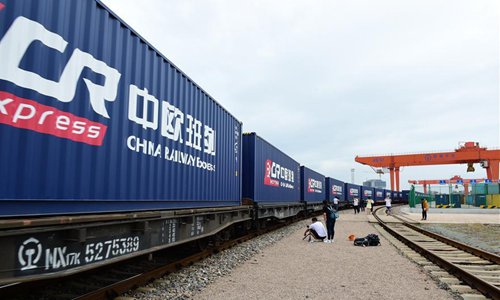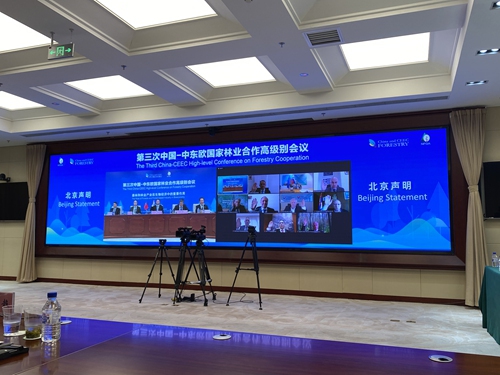COMMENTS / EXPERT ASSESSMENT
China-CEEC economic cooperation sees a promising future

Photo taken on Sept. 9, 2017 shows a Chinese Railway Express cargo train leaving for Prague, the Czech Republic, from Yiwu, East China's Zhejiang Province. File Photo:Xinhua
Hungary recently inaugurated the country's largest photovoltaic power plant built by China National Machinery Import and Export Corporation (CMC) in Kaposvar. It is estimated that it will generate 130 million kWh of electricity annually, saving 45,000 tons of coal and reducing 120,000 tons of carbon dioxide emissions, according to the People's Daily.
As a new achievement of China's proposed Belt and Road Initiative (BRI) and Hungary's "Opening up to the East" strategy, it also showed that cooperation between China and Central and Eastern European countries (CEEC) is bringing tangible benefits to the long-term development of local societies and economies.
In the past decade, China and CEEC members have strengthened ties in various aspects, from trade and investment, to tourism and culture.
Since the China-CEEC cooperation mechanism was setup in 2012, bilateral trade between China and CEEC members increased 85 percent, with an 8 percent annual growth, which was more than three times of the growth rate of China's overall trade, and more than doubled China's trade growth with the EU.
In 2020, when the world struggled with the pandemic, the two sides, not only managed to cooperate on epidemic prevention, but also recorded an overall trade growth of 8.4 percent, surpassing the $100 billion milestone for the first time.
Economic cooperation on both sides has shown vitality and strong resilience. Moreover, compared with other regions of Europe, CEEC members, as emerging markets, have greater potential in areas such as connectivity and energy investment. And China and CEEC members can draw on each other's strengths to further boost their economic and social development during the post-pandemic era.
In addition to traditional cooperative areas, such as trade, energy and infrastructure, the two have great potential to join hands in developing green and digital economies, health industries, as well as education.
Many CEEC members have regarded the post-pandemic era as a vital opportunity to achieve a green transformation. Meanwhile, China has great advantages in areas such as clean energy and new energy vehicles. China can also facilitate the development of the digital economy of CEEC members through technology support and talent sharing among others.
The second China-CEEC Expo is scheduled to be held next week in Ningbo, East China's Zhejiang Province, with more than 2,000 exhibitors and 6,000 buyers being expected at the event. While many countries are still enduring economic recession, the event shows high expectations from businesses from both sides and is expected to further boost economic exchanges.
It is true that mutually beneficial cooperation cannot guarantee that everything is flawless. Since the pandemic broke out, the China-CEEC cooperation witnessed both resilience and setbacks but what is much more important for the two sides is the increasingly promising prospect of cooperation.
Based on mutual respect and without political strings attached, cooperation between China and the CEEC will not only bring interest to both economies but will also give momentum to the overall cooperation between China and Europe. It is believed that countries under the alliance will not let insignificant noises to undermine the rosy prospect of economic cooperation and will join hands together to win a better future for both peoples.
The author is an editor with the Global Times. bizopinion@globaltimes.com.cn



